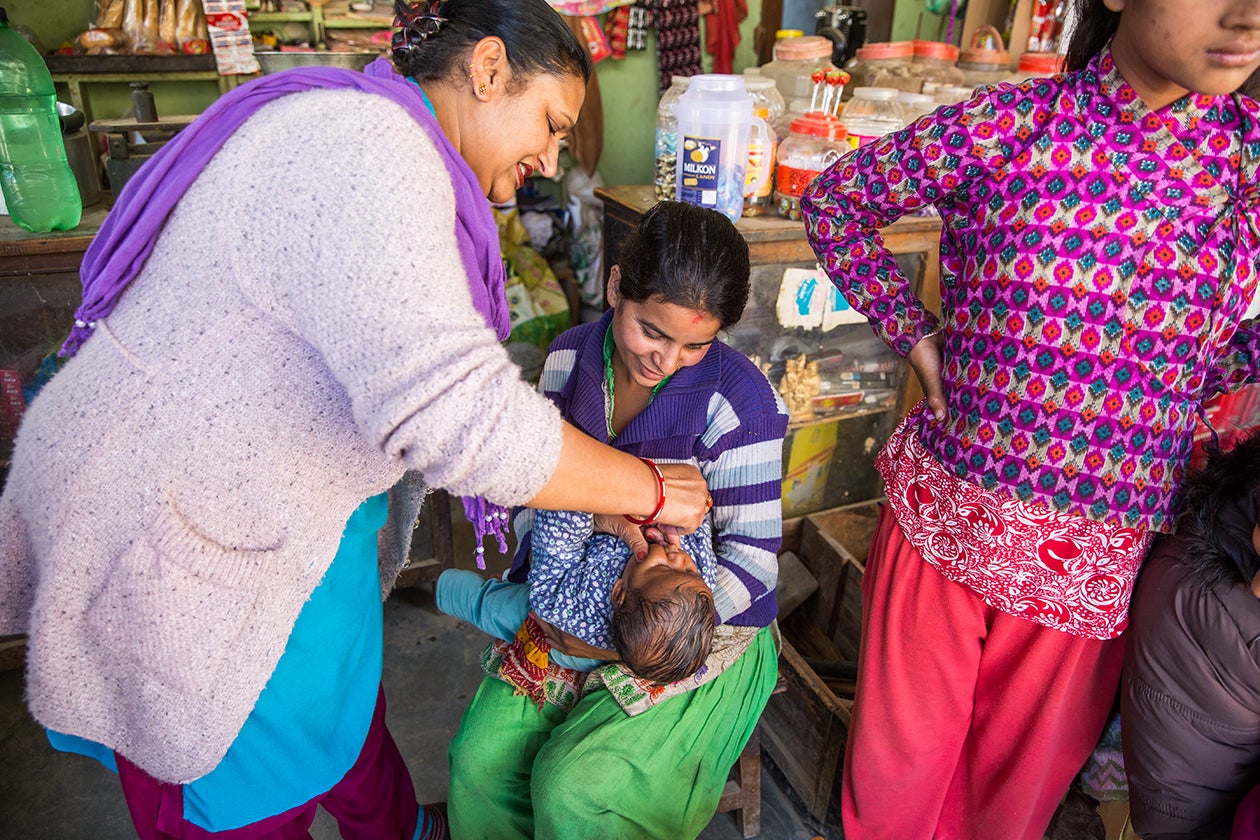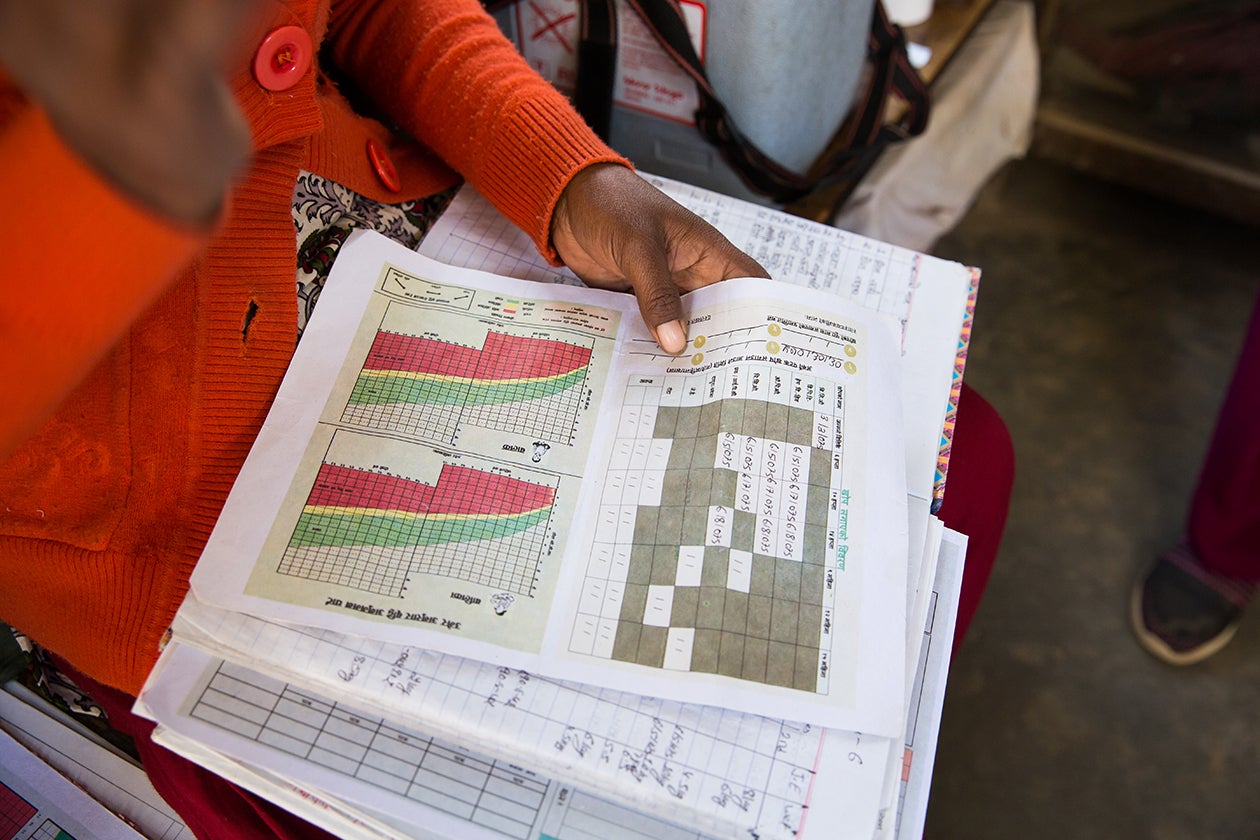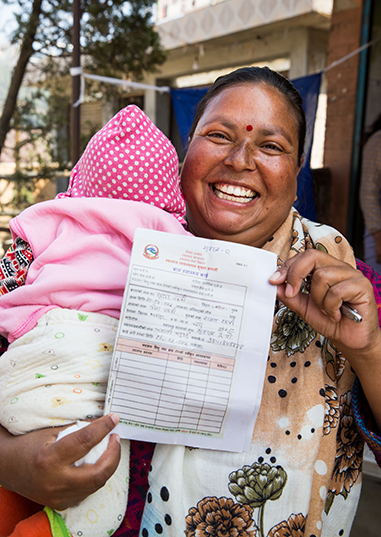Under-five mortality reduction in Nepal
From 2000 to 2015, Nepal’s under-five mortality rate decreased by 53 percent.
CONTENTS
Quick Downloads

KEY INSIGHTS
Over time, Nepal has complemented progress in community health with investments in health facilities, an approach that enabled the country to adapt successful interventions and extend the reach of the health system.
Anchored by the symbiotic development of community-based and facility-based care, Nepal used a variety of interventions to confront its most urgent child health challenges. The government used local research to inform decisions made at the national level, ensuring that interventions addressed gaps in areas like neonatal health. This approach provided a critical validation of global best practices, fostering a sense of national ownership of the resulting decisions.
Emphasis on neonatal mortality
Confronting the challenge of neonatal mortality reduction and making it a distinct priority
Nepal confronted the challenge of neonatal mortality reduction and made it a distinct priority. It recognized neonatal mortality as a particularly complex challenge that must be specifically addressed as part of broader under-five mortality efforts—and shaped its policies accordingly.
Nepal had already established a National Safe Motherhood Program in 1997 to address some of the causes of neonatal deaths. Soon after the turn of the new century, however, two reports—the 2001 Demographic and Health Survey (DHS) and the 2002 State of the World for Newborns in Nepal—convinced the Ministry of Health that the country needed to address neonatal mortality more directly and with new urgency.

Community health tied to health facility systems
Close alignment of community health efforts with health facility systems

While Nepal took important steps to improve both community health and its medical facility network, it was clear that neither of these two prongs of the under-five mortality reduction effort would realize its full potential by itself. Nepal’s experience affirms an emerging global consensus—that investments in health facilities and community health workers complement one another.
Even as it emphasized community-based approaches, Nepal took strides to bolster its national network of hospitals, clinics, birthing centers, and other health care facilities. This work to strengthen health systems—including the strengthening of infrastructure, facility capacity, and trained personnel—would be essential for any meaningful or lasting reduction of under-five mortality.
Investment in community health
Investment in a strong community health worker program, including expanding the program to meet evolving under-five mortality needs
Interviewees and others in the global health field have repeatedly emphasized the central role of female community health workers (FCHVs) in Nepal’s under-five mortality reductions. FCHVs have played a crucial role in several under-five mortality prevention and treatment interventions, including breastfeeding education; the provision of zinc and oral rehydration salts for treatment of diarrhea; the diagnosis, treatment, and referral of serious pneumonia cases; and counseling on birth preparedness.
Such a localized cadre may be especially useful in countries with major geographic access challenges, such as mountainous regions, deserts, or jungles that cannot be easily reached by outside personnel, or that have a highly centralized health system suffering from limited reach in rural areas.

Local research
Conducting local research to better understand local needs and ensure robust support for change in a deeply traditional country

In a country where many medical providers and local officials are skeptical of recommendations made by international organizations and dubious of their applicability to Nepal, local research provided a critical validation of global best practices. This research provided Nepali officials with a localized, irrefutable, and necessary evidence base that fostered a sense of national ownership and spurred implementation across the country’s diverse cultural groups, economic levels, and geographies.
Nepal consistently demonstrated a commitment to locally designed and implemented research. Examples included the adoption of chlorhexidine as a cord care treatment, the vitamin A campaign, and the evaluation of vaccines.

Under-five mortality reduction in Nepal

Ask an Expert
Our team and partners are available to answer questions that clarify our research, insights, methodology, and conclusions.
